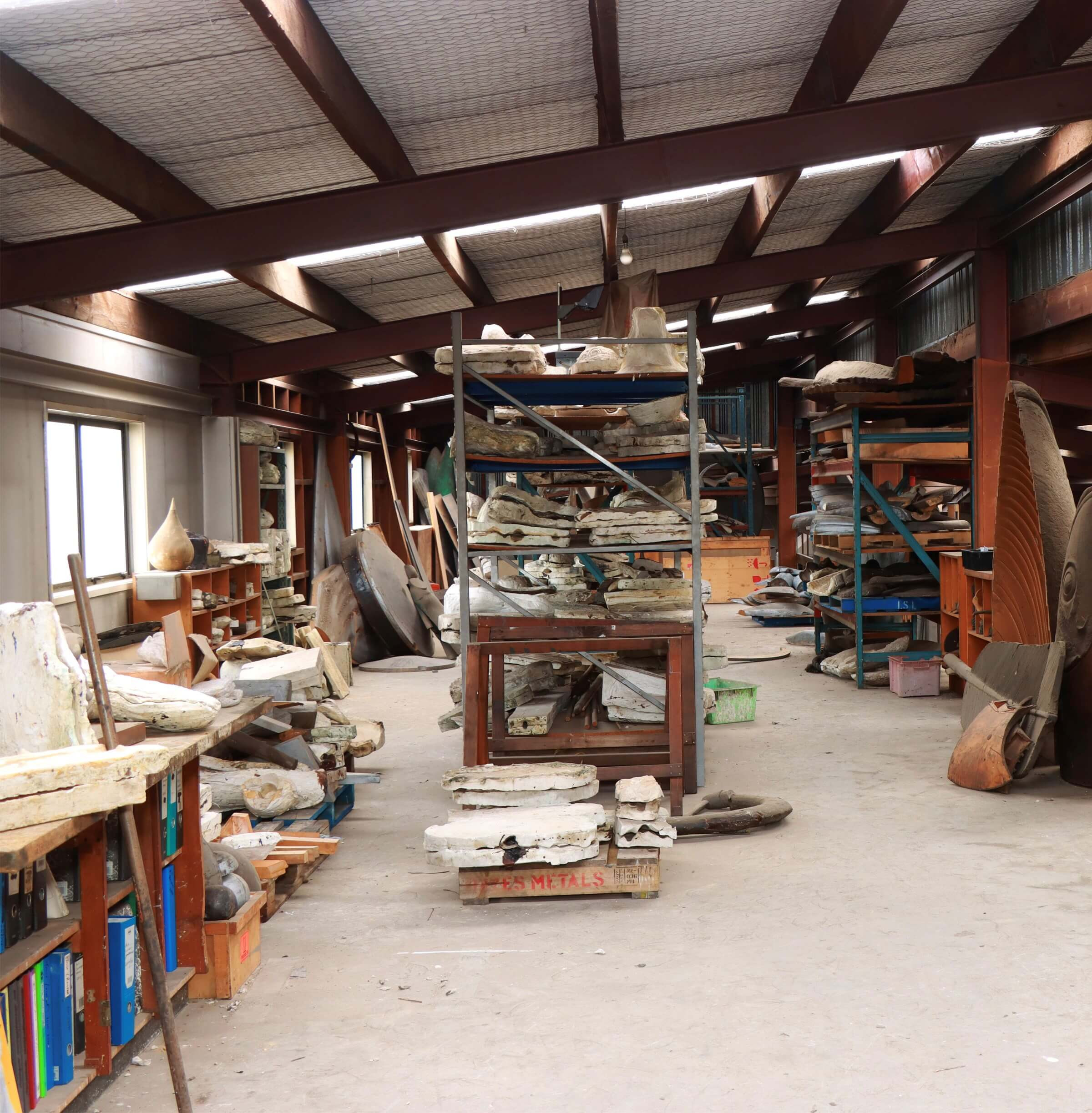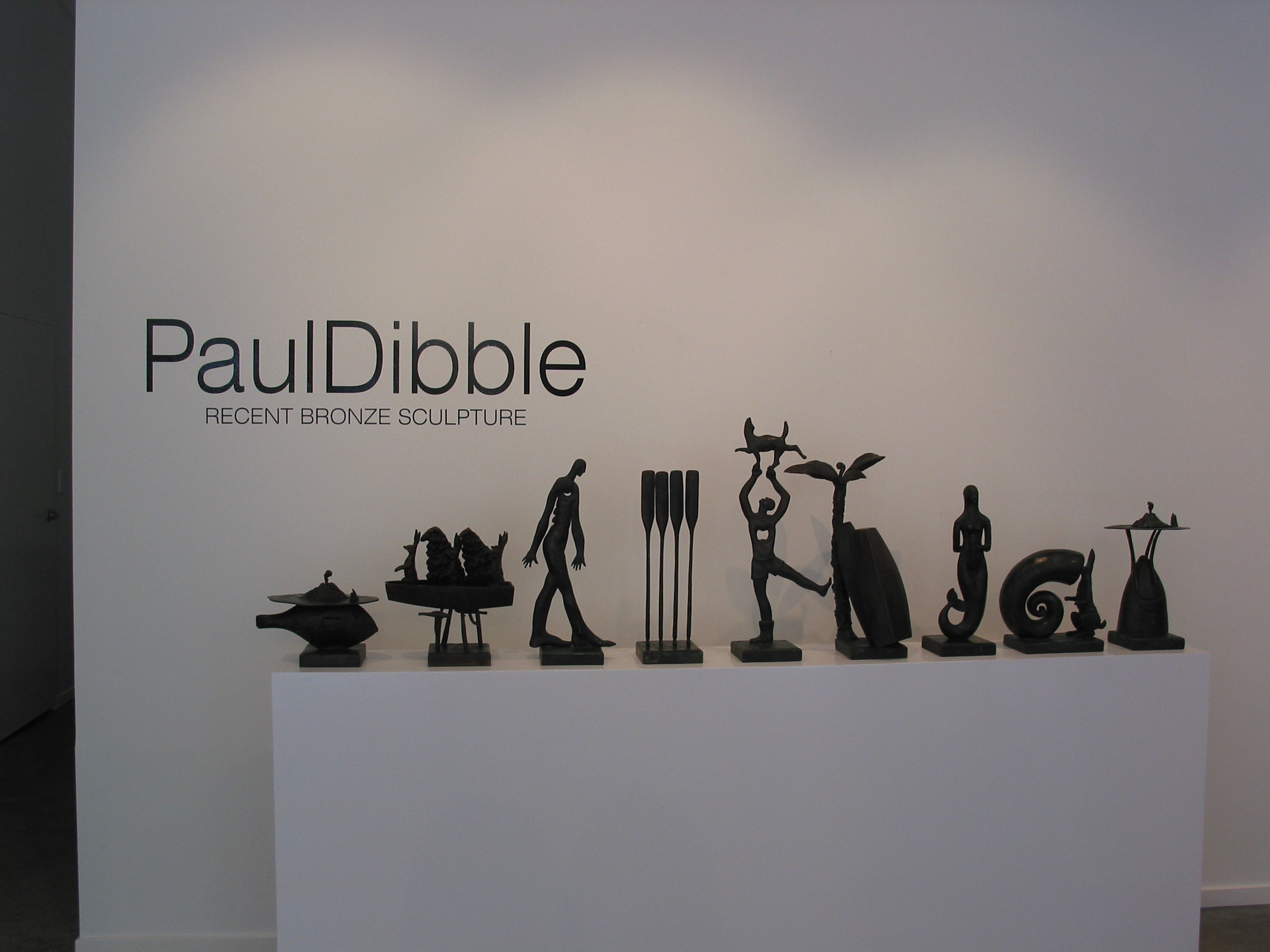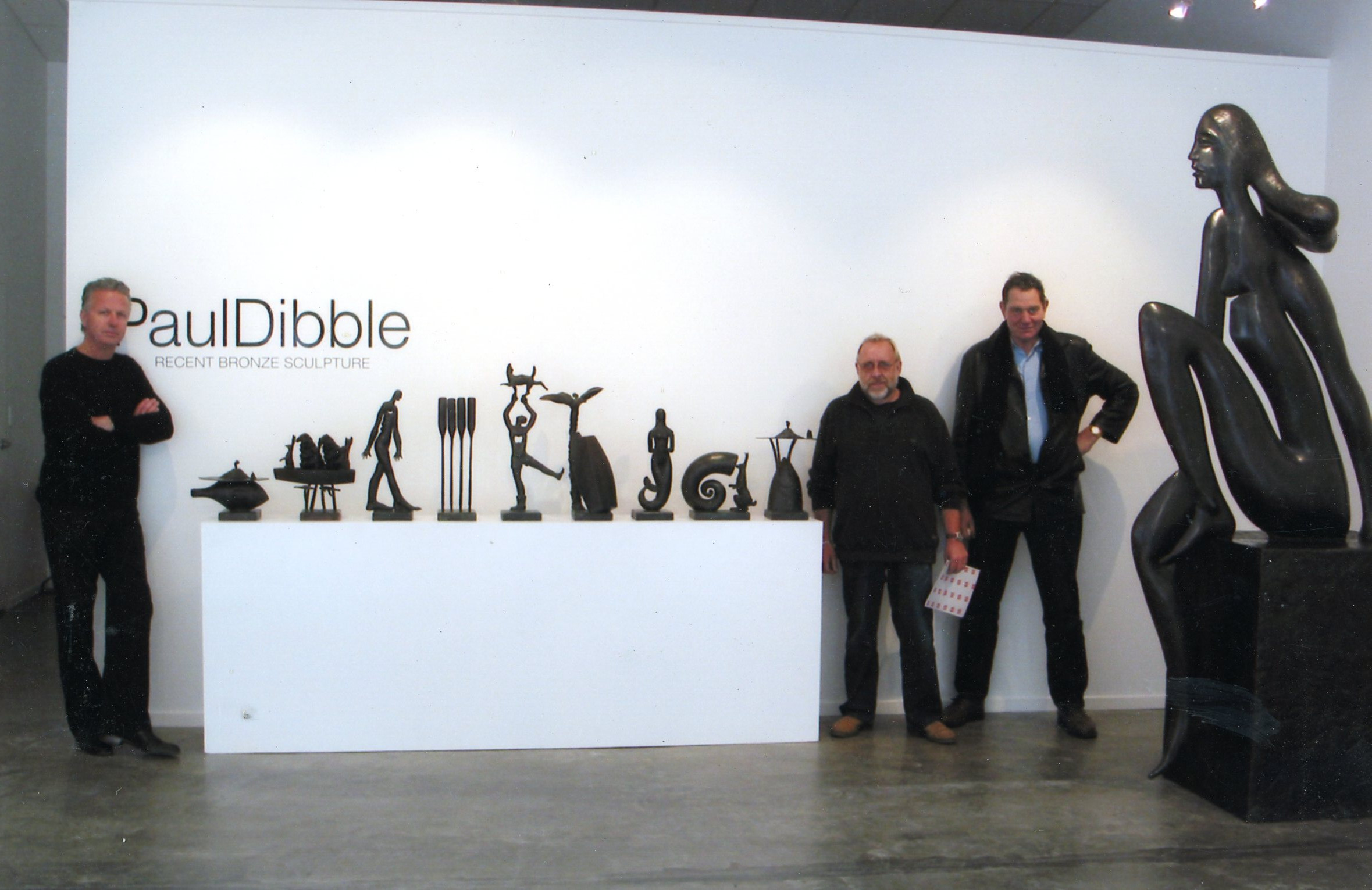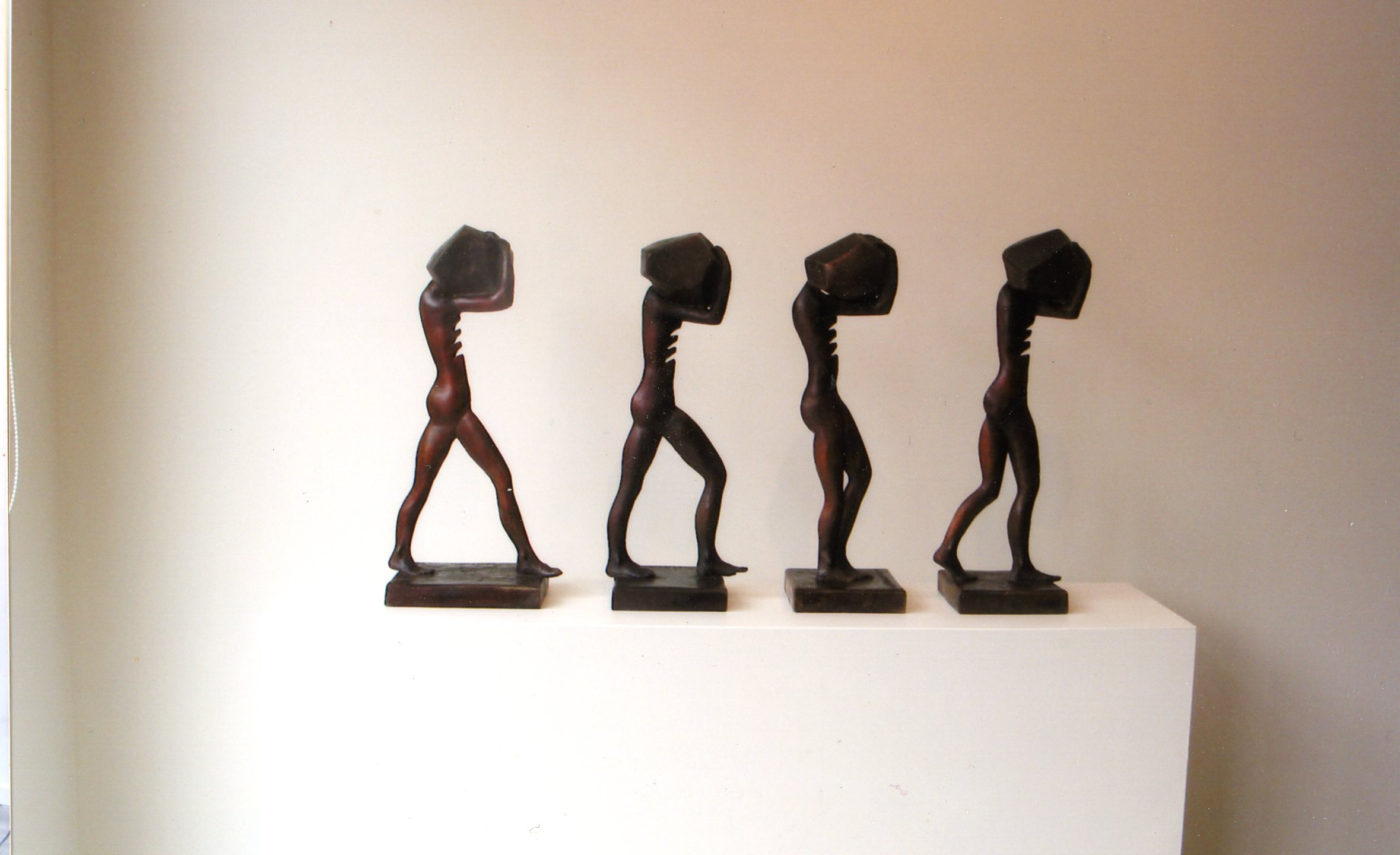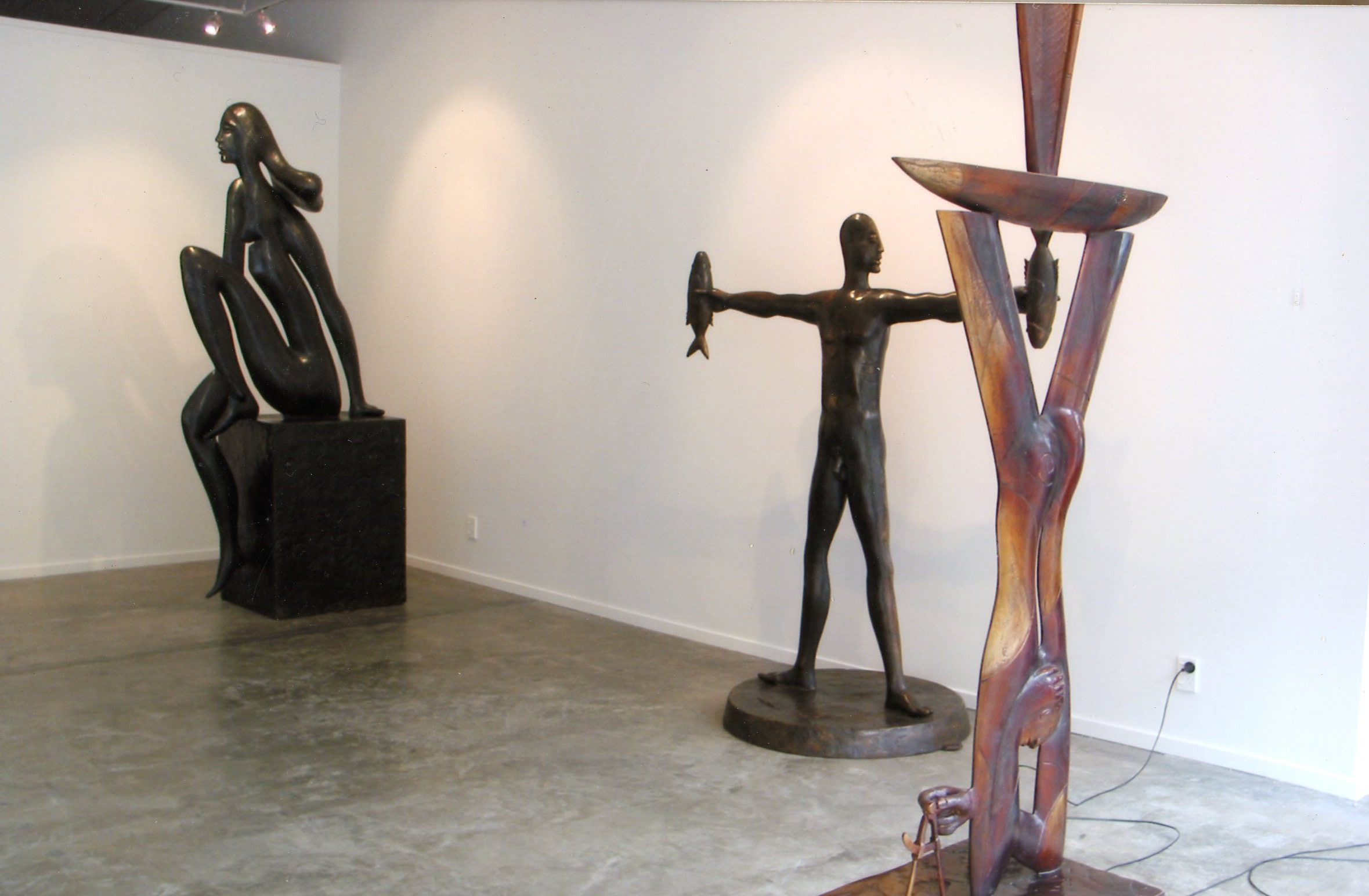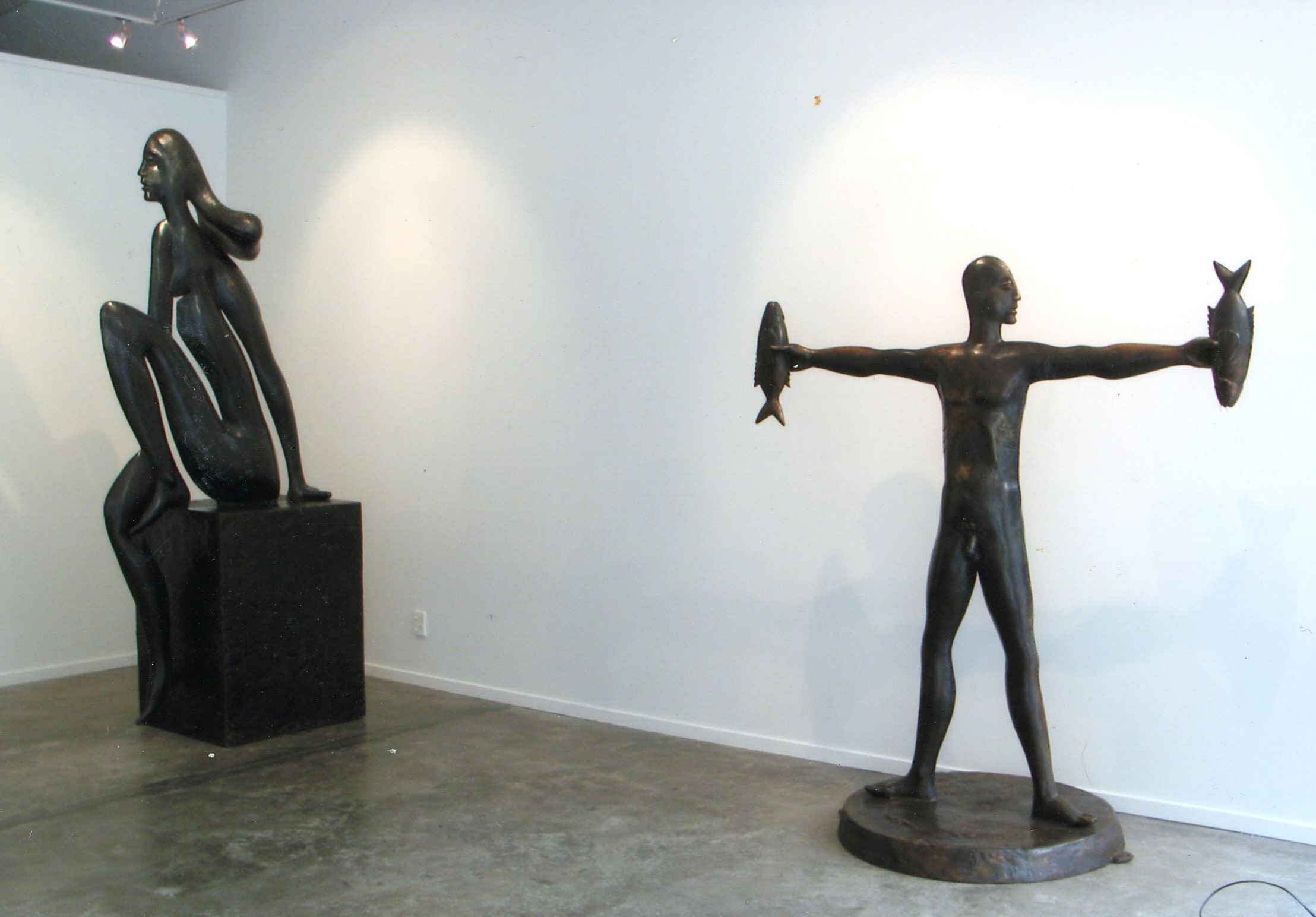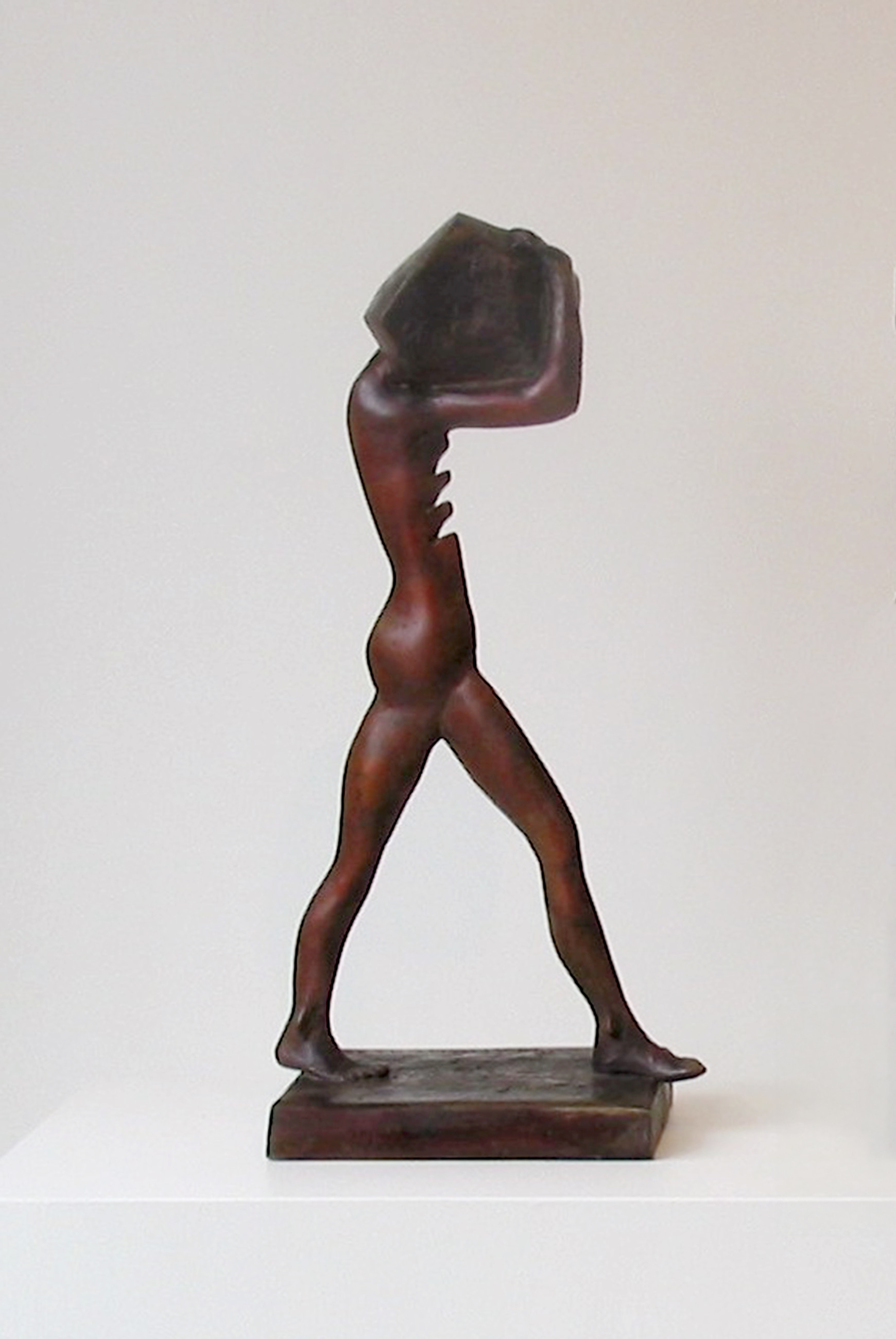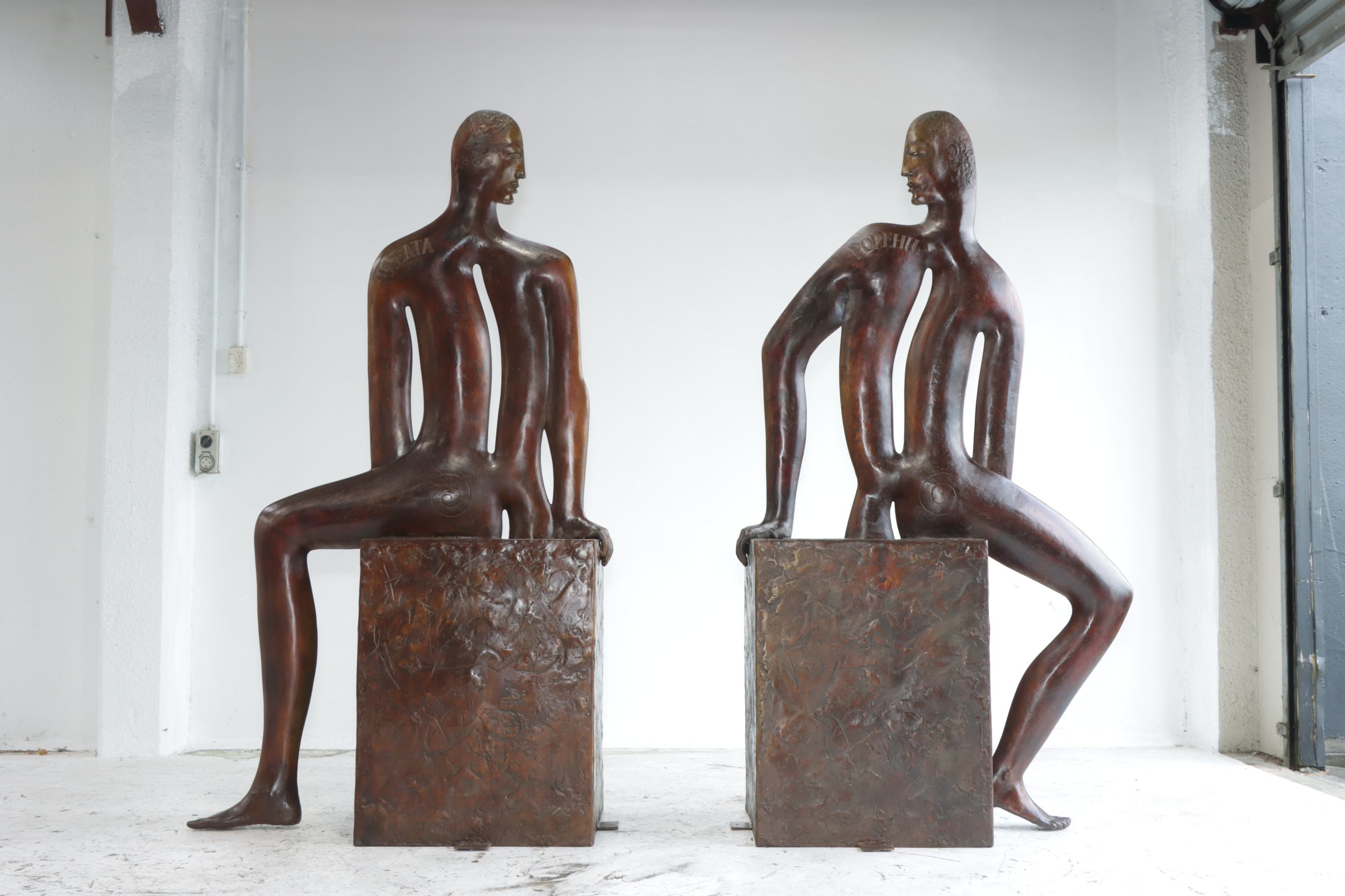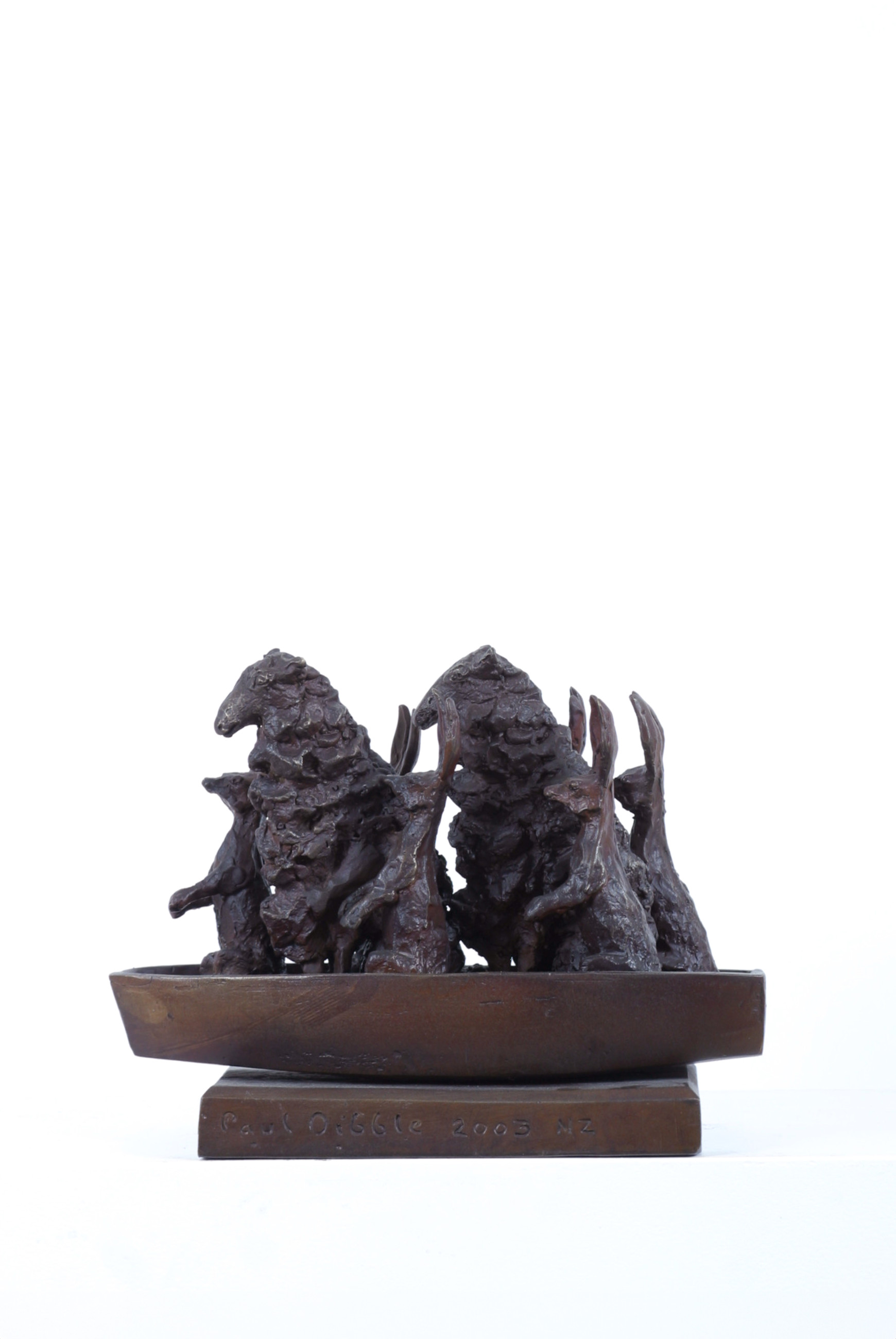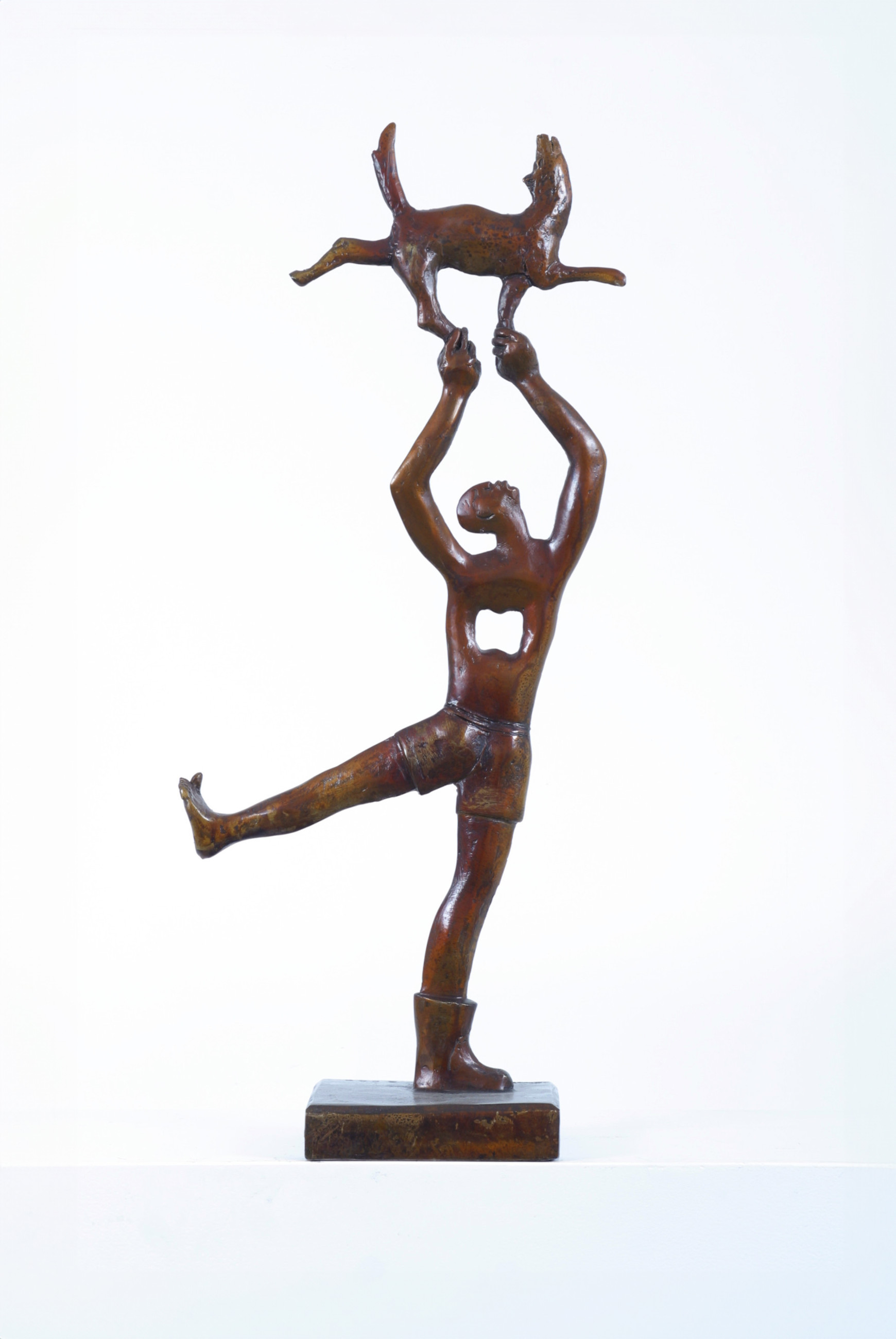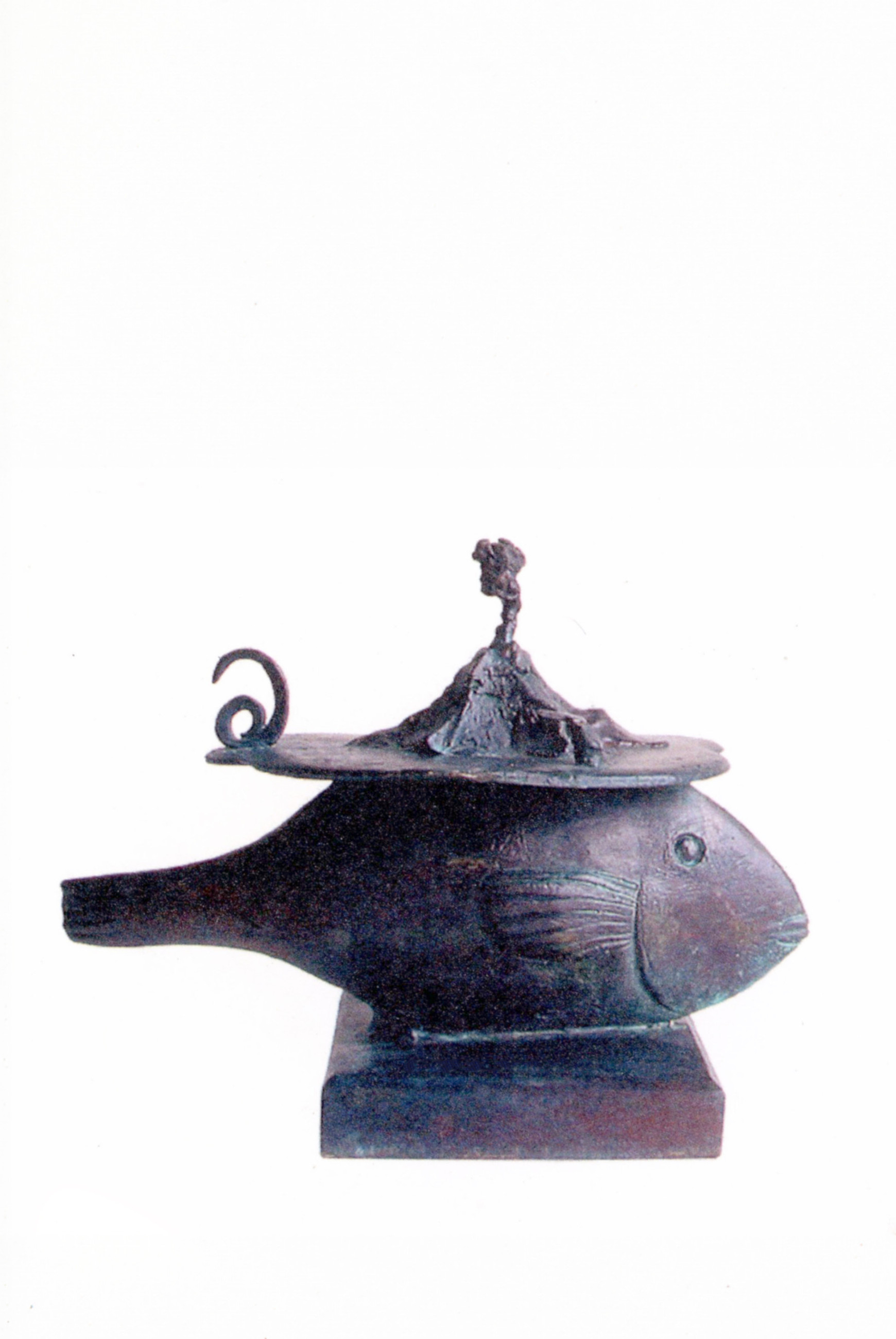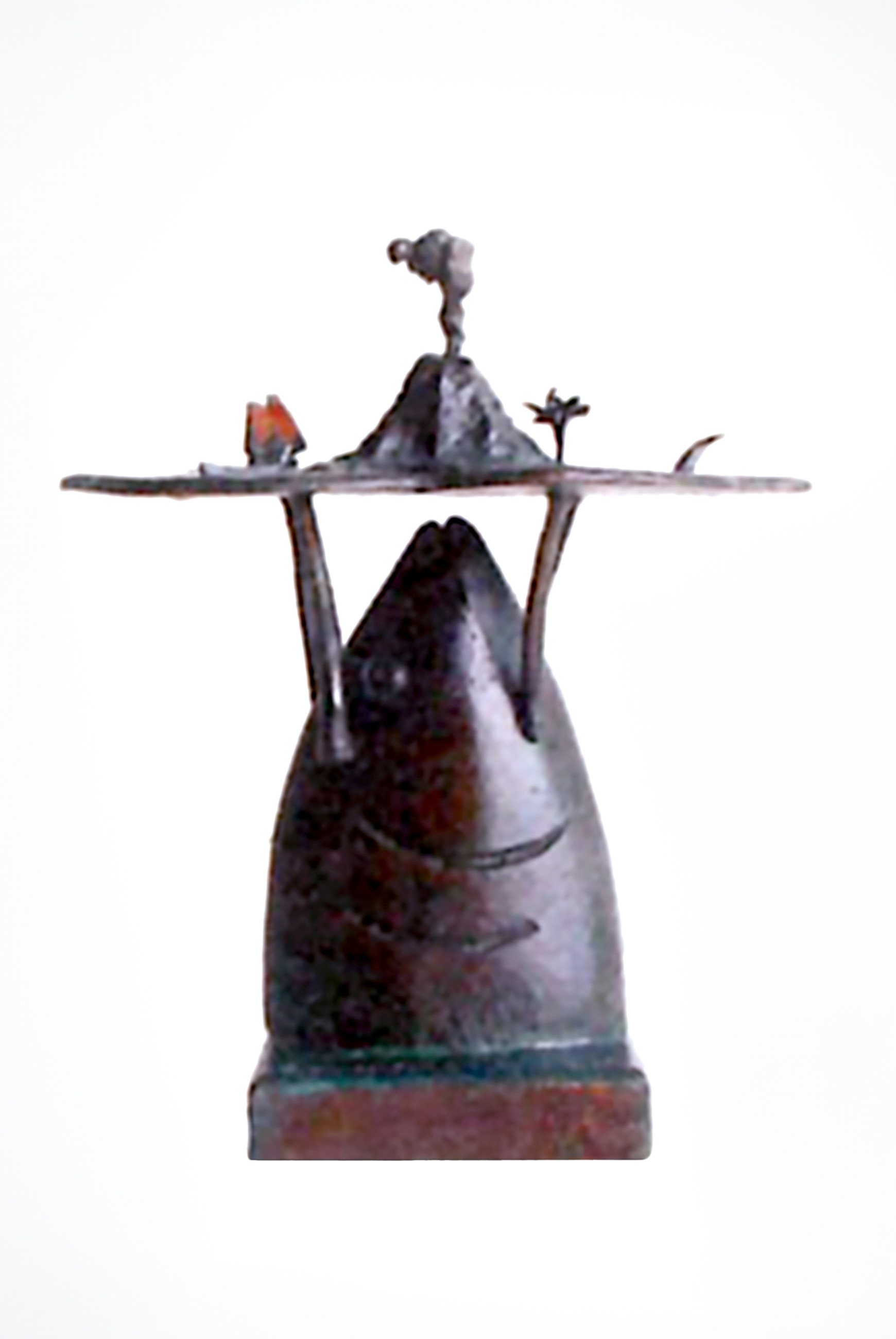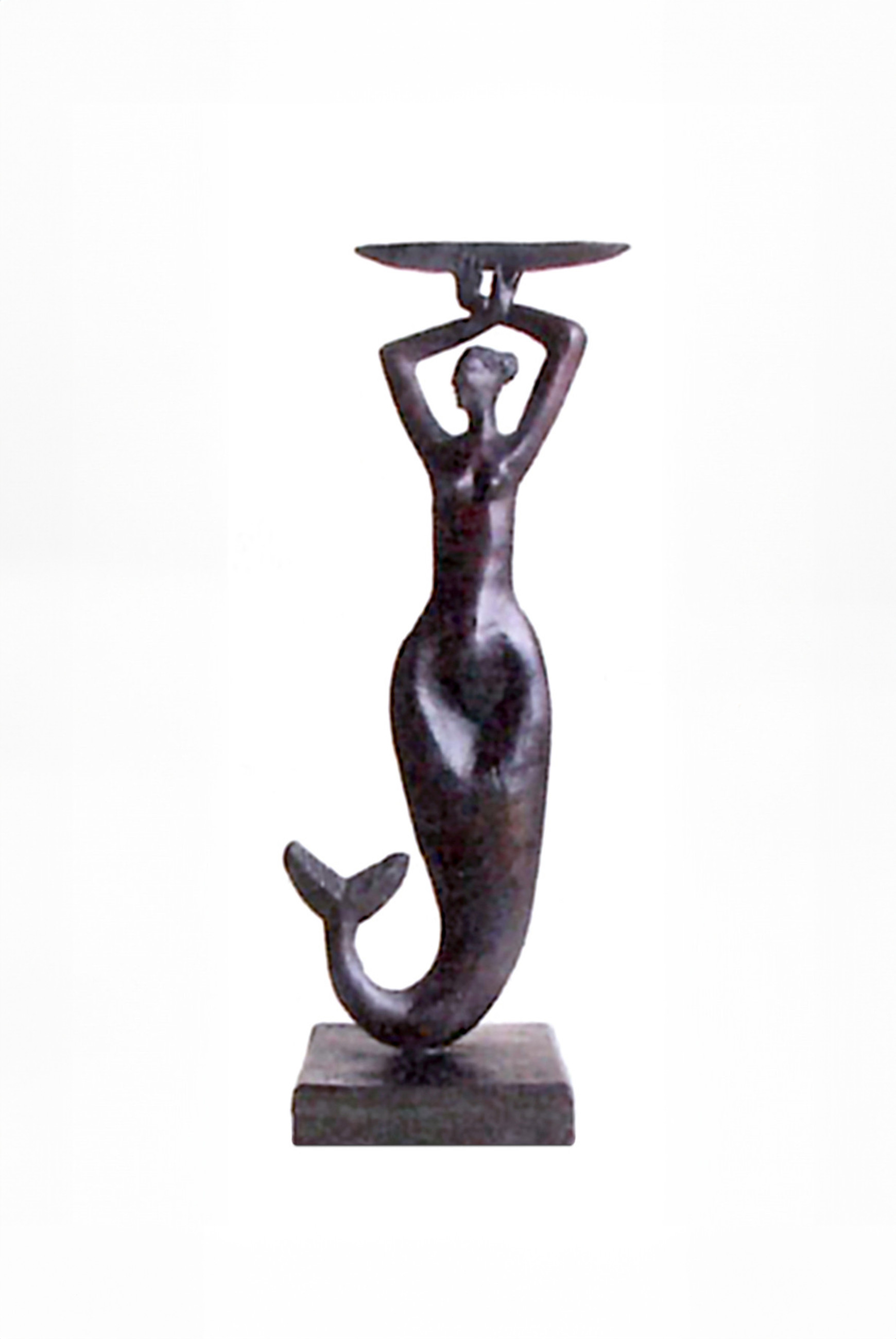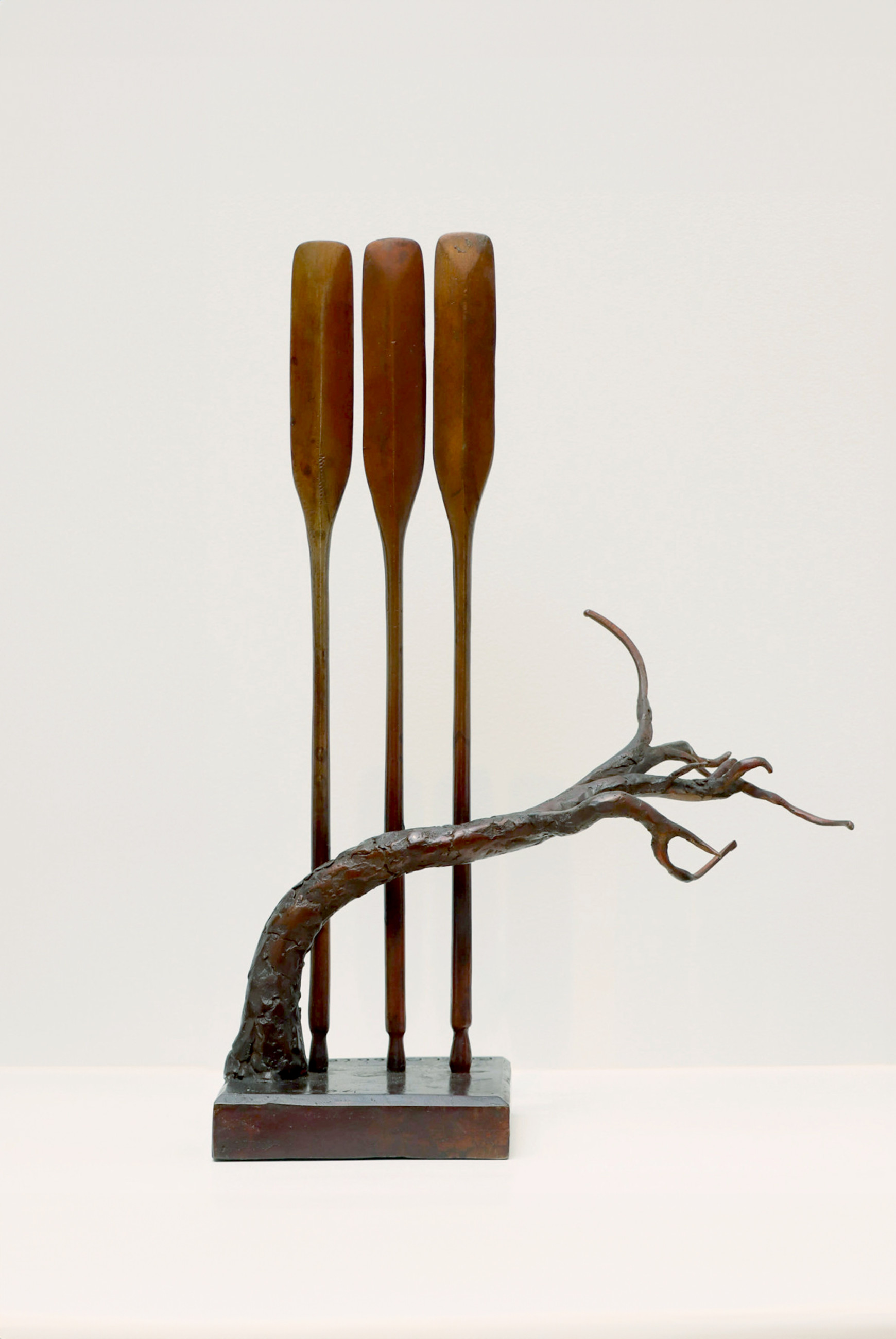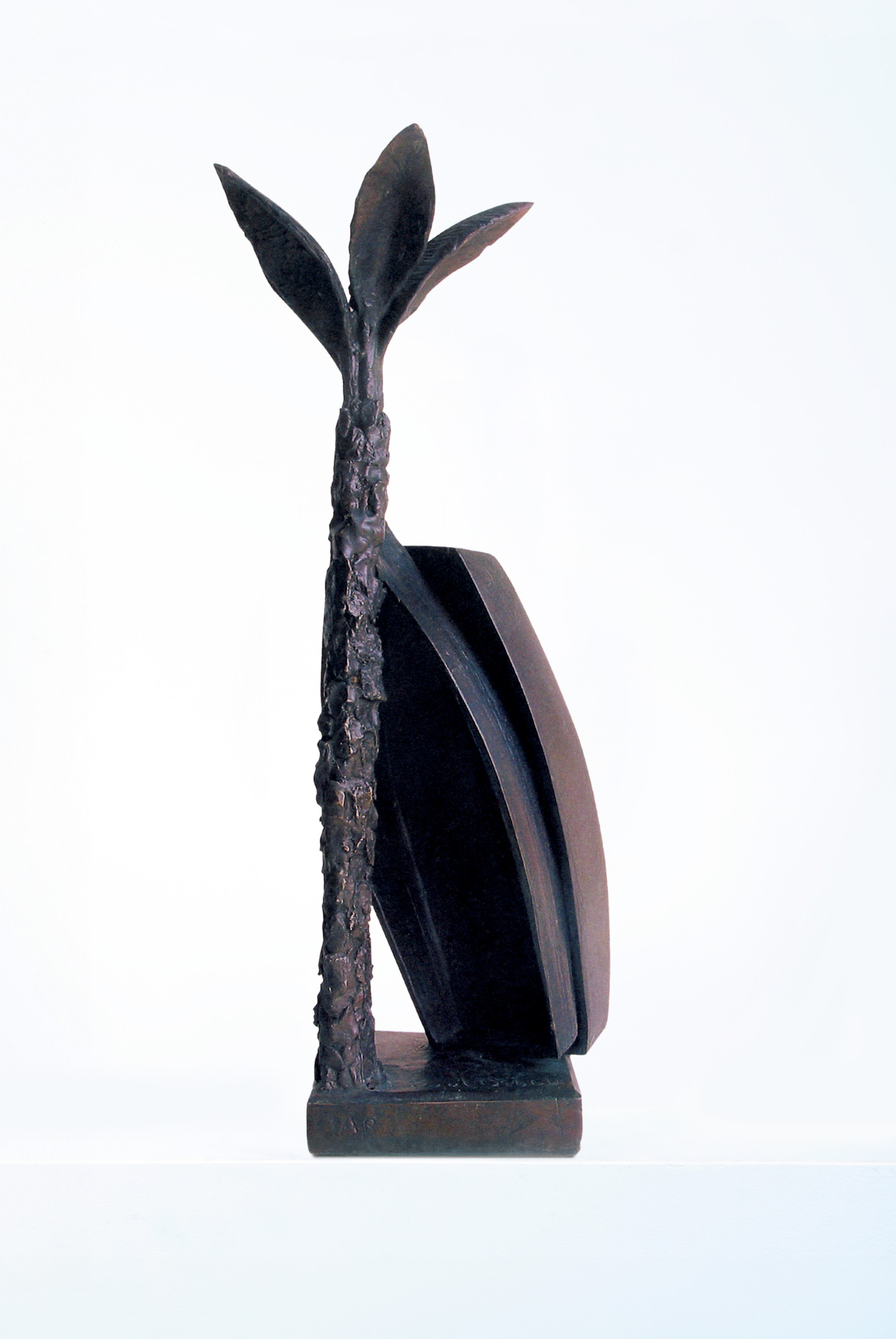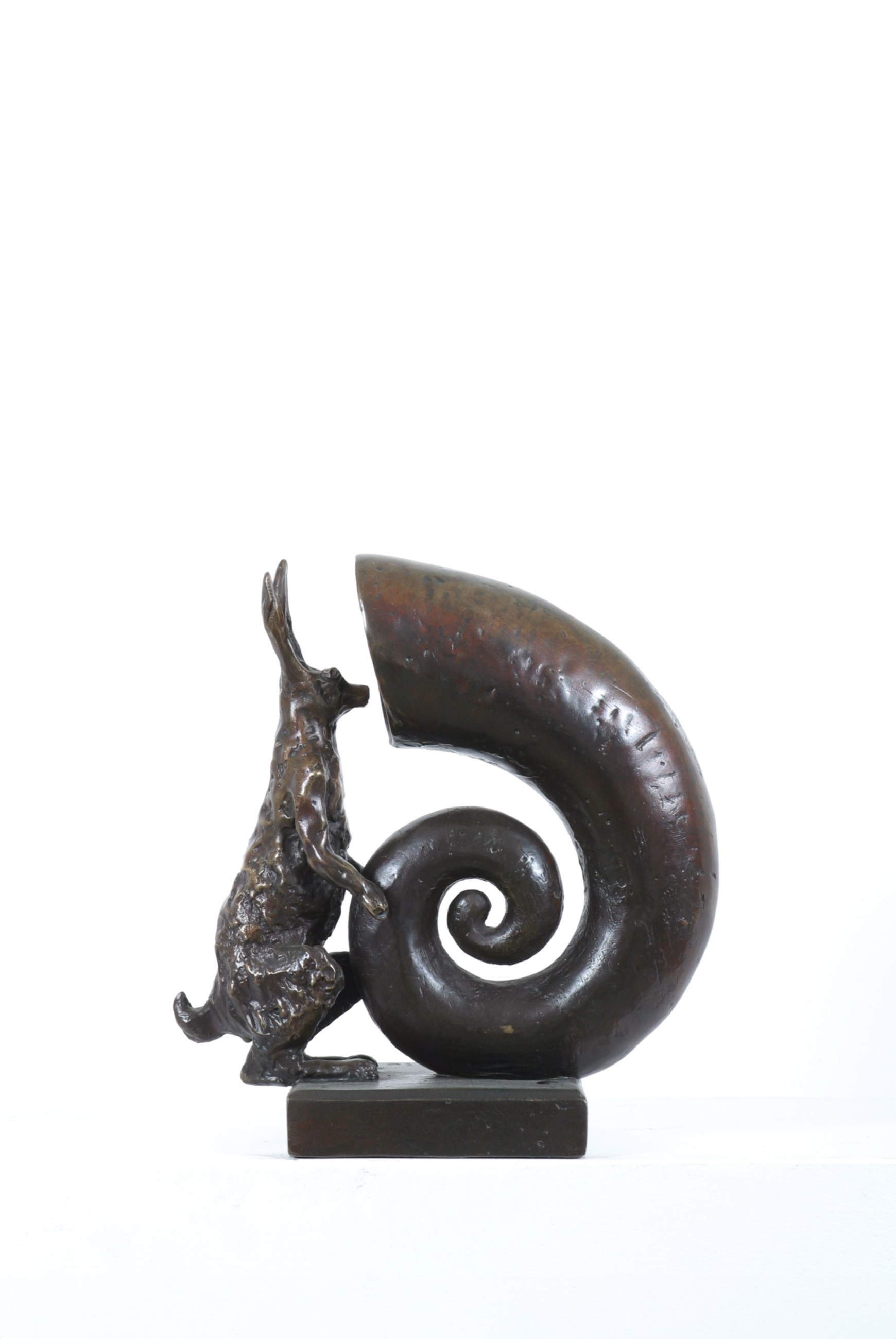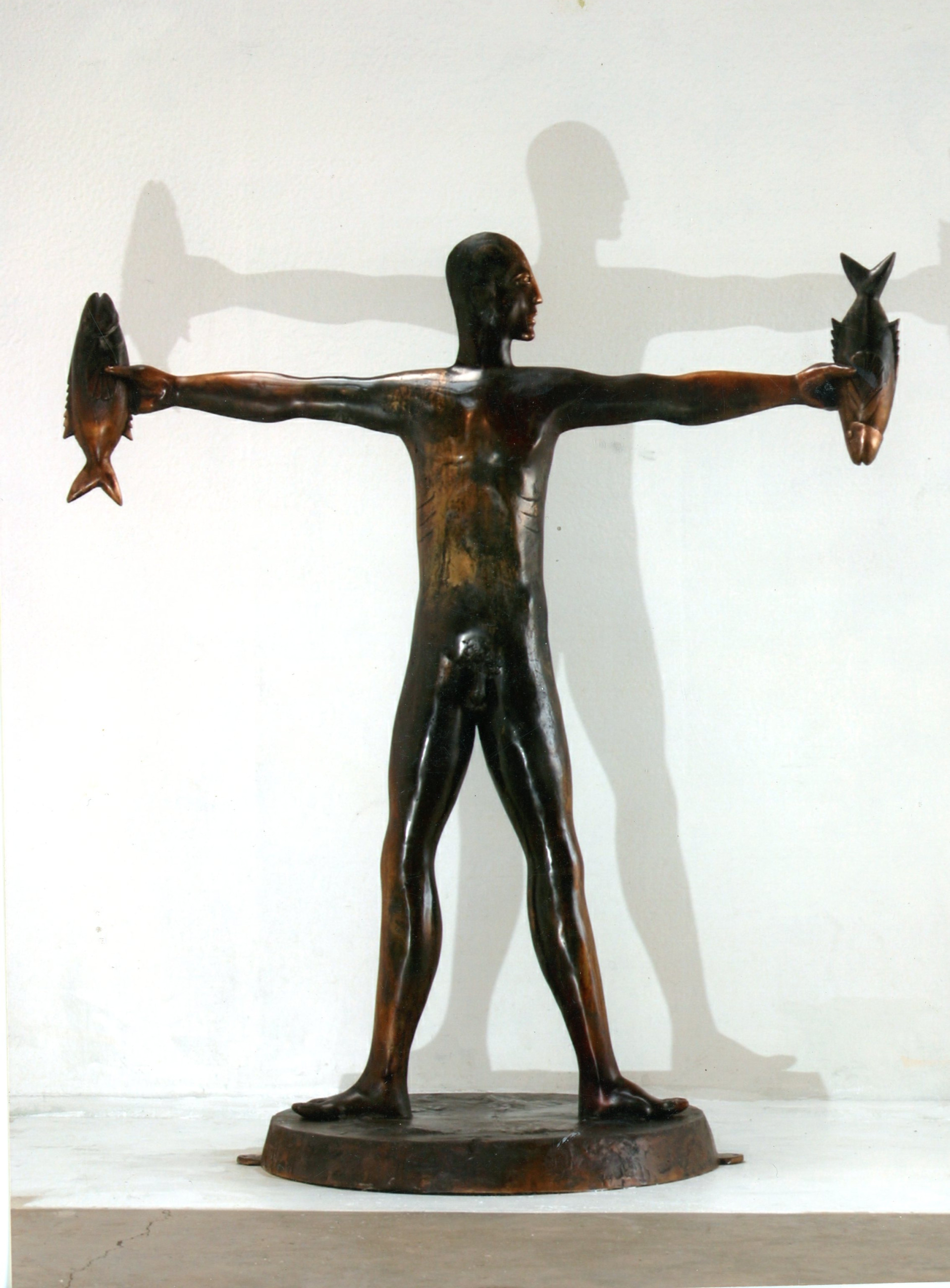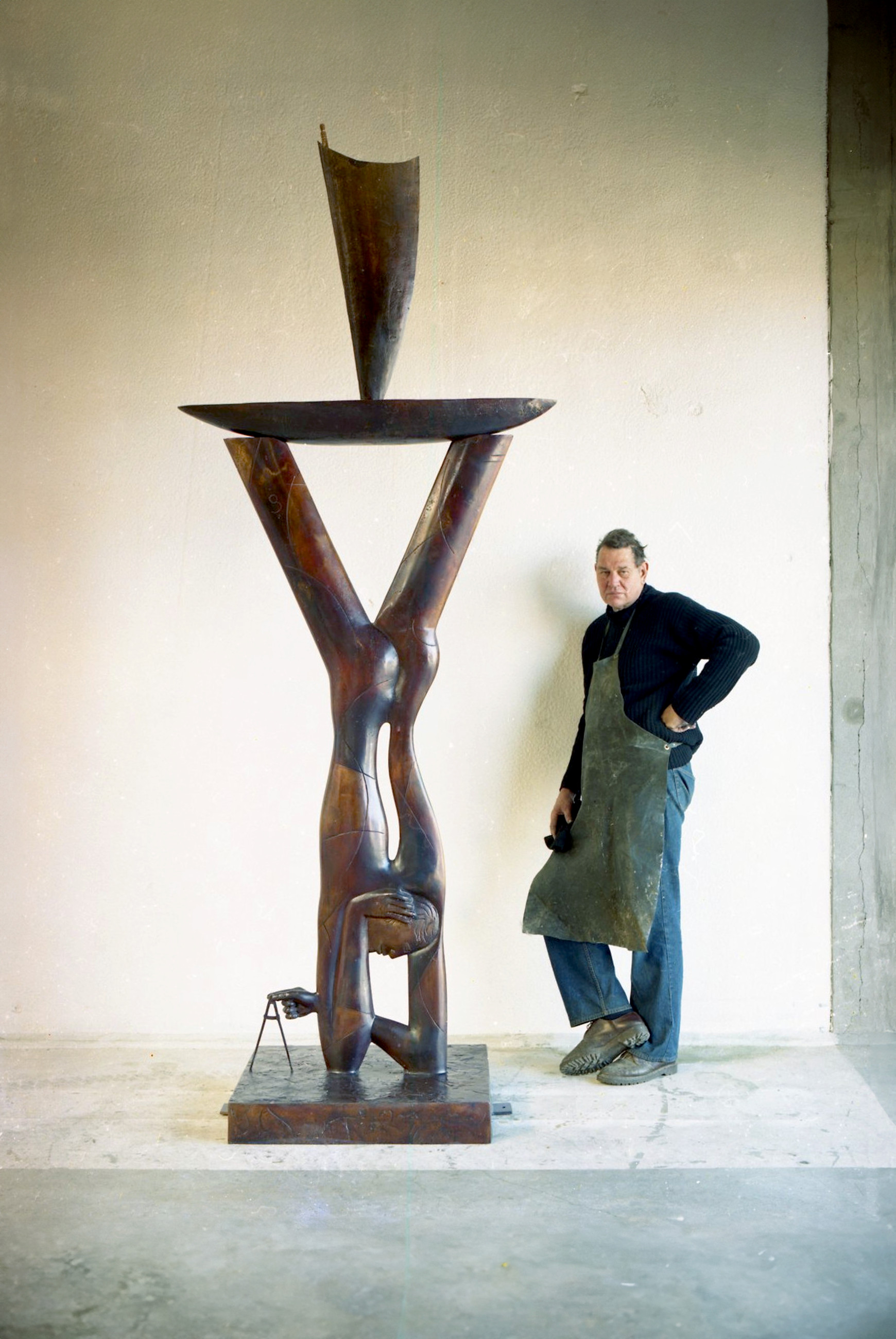September 27 - October 25, 2003 Paul Dibble
September 27 - October 25, 2003 Paul DibbleSolo, Gorge Rd Gallery, in association with Gow Langsford Gallery, Queenstown
Text
The first of the small seated male figures was titled Giant Male Figure After Goya. It was made small as a model and then scaled up large to a height of 2.7 metres as an edition of three: ending up in such varied addresses as in Auckland overlooking a view of Governor Grey’s house on Kawarau Island and at a winery in Havelock North. Many people have referred to the work as Paul Dibble’s “thinker” probably because it depicts an isolated man involved in thought like the famous work by Rodin.
The ideas behind the seated male figures are from Paul’s fondness for Goya’s etchings and they draw directly from them. Goya did one series about the Napoleonic Wars featuring huge figures sitting quietly on a hillside looking down on the fighting and atrocities taking place. In a NZ context they reflect the lonely individual pondering the changes in our south antipodean paradise.
These ideas of the solitary figure are carried on with also using female forms. Essentially, they deal with formal qualities of the linear rhythms of the figure opposed to the solid mass of the block on which they sit.
Further seated figures with variations in posture have been made. Some have the arms tilted back differently, the legs bent instead of straight and juxtapositioned against the base. All of them contain the same sense of isolation and serenity.
A group of sculptures called the Tableaux were created where individual objects were arranged as one body to create a single artwork. Instead of the more usual method of designing a complete work and then setting about making it the pieces were made by a progressive method whereby one was modelled, and its form dictated the next, a sort of synthesis by chain reaction. The various items, parts of the whole work, were thematic explorations around a central idea. The first of the larger tableaux was completed in 2002. Although Dibble had investigated elements within this Tableaux before, and he had also used an assemblage type of methodology with elements linked together in a line-up on a base, because of its size and expanse it was a breakthrough having a new and separate identity from his previous work.
Basically, each artwork is made up of a group of small works, each around 20 – 30 centimetres in height with individual stands, displayed on a long thin base (or in the earliest versions spread in a grid formation) and brought together to produce a pick-and-mix effect. Composition was achieved by juxtaposing the elements in the arrangement, fiddling with variance and balance by placing large and solid next to the thin and spindly. Some taller elements curve over to encompass and bring into order the next; linking, comparing and contrasting, and also suggesting rhythmic repetition with parallel lines striking down beats as if they were a background base melody. The impression is of a quick flick through memories, of fleeting dreams as a person falls asleep or pictures sifted through in a photograph album. As well as compositional forms included within the group, ideas in a common theme are also linked together in the body, while the odd renegade has been thrown in to stop it becoming too laboured and methodical. The effect is of a unified whole yet surprises and delights can be discovered among the details.
